This luxurious feeling, velvety whipped tallow balm deeply nourishes and softens the skin. It’s a quick and easy tallow body butter recipe that can be used for so much more! Packed with essential fatty acids and vitamins, it soothes and strengthens your skin’s barrier and promotes a healthy complexion. Or use it on your hair!
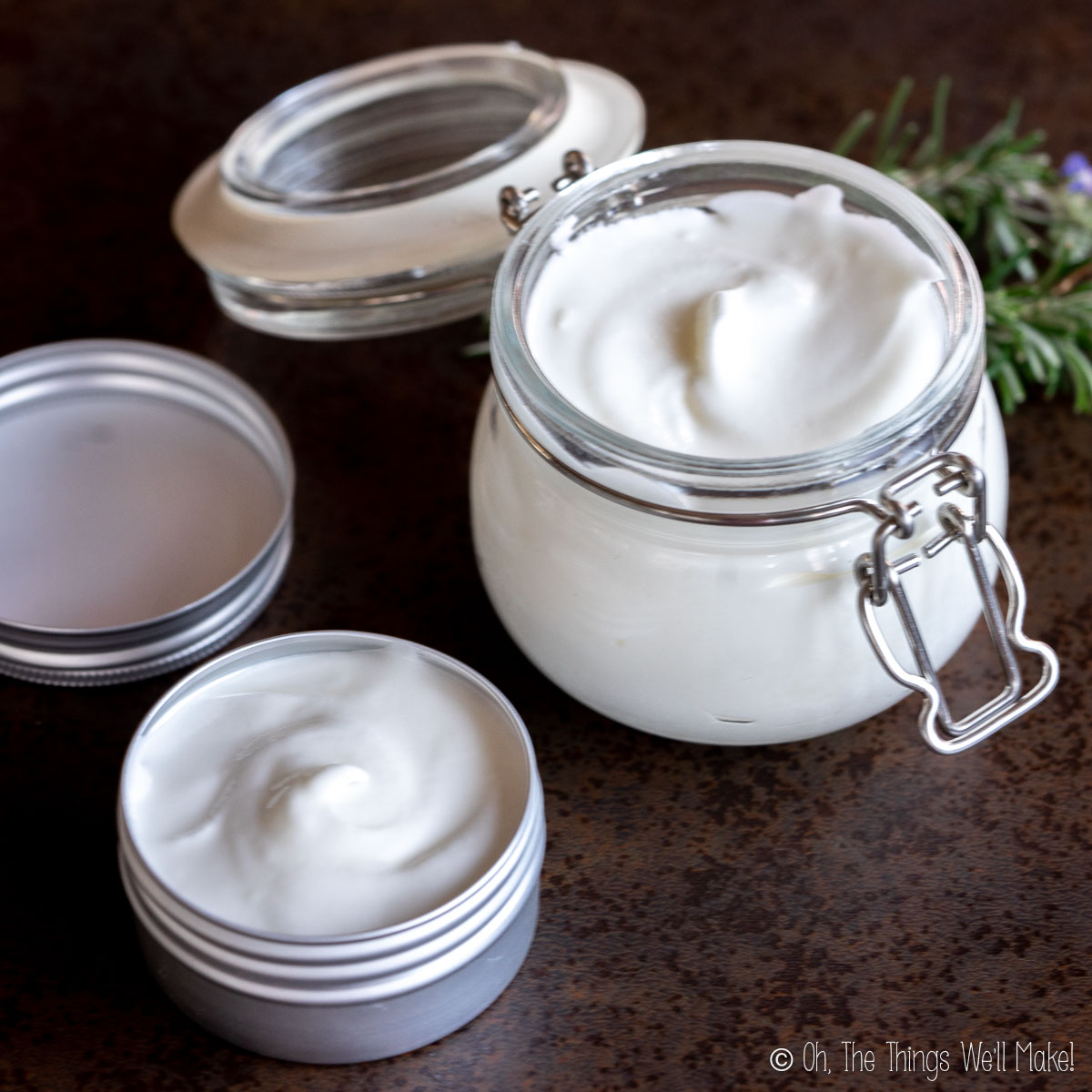
Looking for a natural alternative to store-bought moisturizers? Whipped tallow balm might be the perfect choice for you. While it may sound a bit crazy to use animal fat on your skin, you might be surprised to find just how nice it feels. I stupidly put off trying it for way too long.
While I showed you how to make a whipped body butter in the past, I’ve always preferred the feel of homemade lotion. Tallow body butter is different, though, and melts right into your skin.
There are other great reasons to get over the misconceptions of what it might be like, though, and give using it a try.
Why make a whipped tallow balm?
This may be the world’s easiest DIY skincare product to make! It’s a quick and simple product that uses only natural, non-toxic ingredients. Because it doesn’t use any water-based ingredients, it doesn’t need a preservative. It’s light and airy and absorbs quickly into the skin.
While you could buy it, by making it yourself, you can save money and control exactly what goes into it!
While it may sound strange to use animal fat on your skin, our ancestors have used tallow for centuries in cooking, soap making, and skincare products.
Benefits of tallow balm
- Tallow is derived from animal fat, which closely resembles the structure of human skin lipids. This similarity allows for rapid absorption into our skin. It’s also well tolerated by most skin types, including sensitive skin, without causing irritation or clogging pores.
- Speaking of clogging pores, tallow has a comedogenic rating of 2, meaning that it has a moderately low likelihood of causing acne. My skin has been acne-prone for as long as I can remember, and I’m able to use this tallow balm on my face without issues. Each person, though, will need to try it out for themselves.
- Tallow is rich in essential fatty acids, including oleic acid and stearic acid. The essential fatty acids in tallow can help strengthen and support the skin’s natural barrier function. This can enhance the skin’s ability to retain moisture and protect it from environmental stressors.
- Tallow contains essential vitamins, such as vitamins A, D, E, and K, which can nourish the skin. These vitamins have antioxidant properties and can help promote healthy skin cell function, repair damaged skin, and reduce signs of aging.
- Whipped tallow balm can soothe and calm sensitive or irritated skin conditions like sunburn, eczema, or dermatitis. Because it’s so gentle, even those with the most sensitive skin can generally use it. It’s safe for babies because it doesn’t contain any harmful ingredients or harsh chemicals. (It’s a great substitute for diaper rash cream!)
- Whipped tallow balm is extremely versatile and more than just a body butter. While it’s particularly useful for softening dry areas like elbows, knees, and heels, it’s really a multipurpose product. It can be used on the face, hands, and lips (my tallow lip balm recipe is amazing!). It can even be used on hair. I like to glide it over my hair to soften it, add shine, and help define my waves.
Tallow Lip Balm
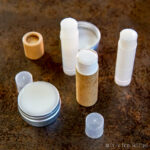
Ingredients
It’s possible to make a whipped tallow balm with only one ingredient: tallow, of course! You can make your own tallow by rendering beef fat or just buy it already made. For the highest quality whipped tallow balm, use grass-fed tallow from a reputable source.
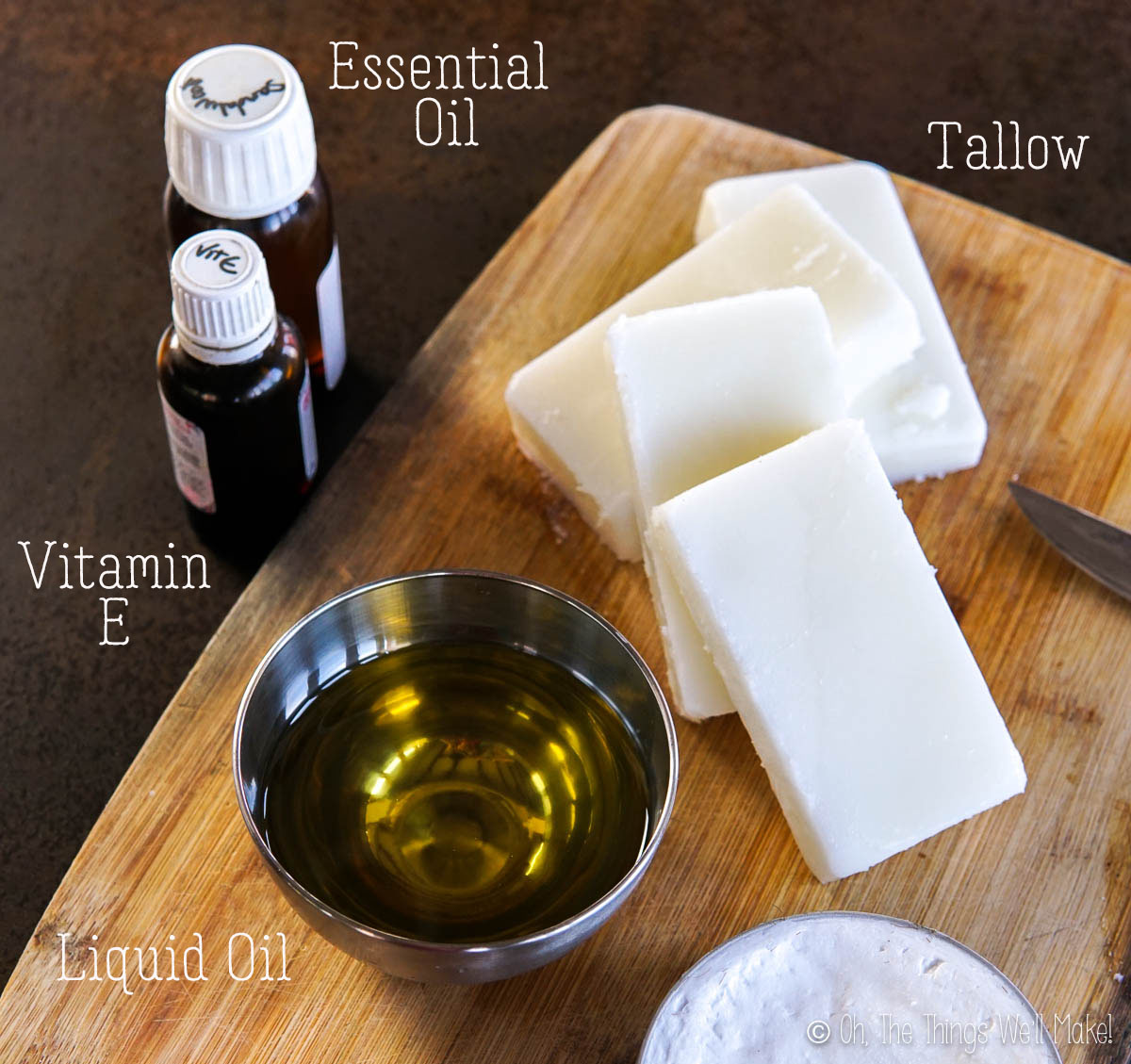
Optional ingredients
To soften up the balm, especially in cooler climates, you can also add a liquid oil to your balm. Popular choices are extra virgin olive oil and sunflower oil as they are easy to find and completely non-toxic.
To provide a pleasant scent and possible therapeutic benefits, consider adding an essential oil to your whipped tallow balm. Popular choices are lavender, bergamot, or lemon. Frankincense is a great choice for mature skin. You could also choose an essential oil blend that many companies formulate specifically to have a delightful aroma.
To extend the shelf life of your balm, consider adding some vitamin E at 0.5% of the recipe by weight. Vitamin E is an antioxidant that prevents oils and fats from going rancid as quickly.
The following cold-pressed oils can cause photosensitivity, meaning that they can make the skin more sensitive to sunlight or ultraviolet (UV) radiation. This increased sensitivity can lead to a greater risk of sunburn, skin irritation, or discoloration when the skin is exposed to sunlight or UV rays after applying or using the essential oil.: (Use distilled instead to avoid issues.)
- Bergamot
- Lemon
- Lime
- Bitter orange
- Grapefruit (Distilled may also cause photosensitivity.)
Apart from the citrus oils, some other oils, like petitgrain, marigold, lemongrass, and verbena, among others, may also cause photosensitivity.
Preservatives
You don’t need a preservative when making this for personal use since there are no water-based ingredients that can allow bacteria and other unwanted microbes to grow.
That said, when using the balm, be careful not to contaminate it with water. (This can happen if you apply it with wet hands.) If the surface of your balm does get wet, allow it to fully dry before capping it and storing it.
If you do choose to use a preservative, make sure the one you choose is suitable for an oil-based product.
Instructions
Begin with the tallow at room temperature and cut it into one-inch cubes. Add the tallow to a medium-large mixing bowl. Carefully use an electric beater to begin to whip the tallow, breaking up all the chunks. Pour in the liquid oil and the essential oils or vitamin E, if you are using them, and stir them into the tallow.
Using a hand mixer or stand mixer, whip the tallow for several minutes until it becomes fluffy and light. When you’re happy with the consistency, transfer the whipped tallow balm to a metal tin, glass jar, or other clean container. Store it in a cool, dry place.
Expert tips
For best results, start with a smooth, well-filtered tallow. I explain how to remove impurities in my post about how to make beef tallow.
The texture of grainy tallow can be improved by melting it and then cooling it rapidly by chilling it in the fridge or freezer. (If your tallow is grainy, make your balm by melting the tallow and oil together. Then, whip them together as you cool the mixture quickly. I explain the process better in my post about making whipped body butter.)
Use a clean, dry storage container to prevent microbial contamination. Consider sanitizing your storage containers with rubbing alcohol before using them.
Storage
To preserve the balm’s freshness and light texture, store it in a sealed container away from direct sunlight and heat. High temperatures can cause it to melt, leaving a solid tallow balm instead of a light, airy, whipped one. It’s also important to avoid storing it in damp places, as moisture on the surface can lead to the growth of bacteria and mold.
How to use tallow balm
Start by warming a small amount of the balm between your palms, and then gently massage it into your skin or glide it over your hair.
You can also use it as a fat-based cleanser by rubbing it into your skin and then removing it with a warm, damp washcloth.
Video Tutorial
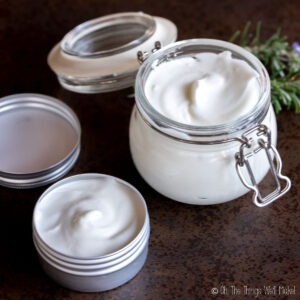
Whipped Tallow Balm
Materials
- 240 g tallow
Optional ingredients
- 57 g liquid oil
- 1.5 g vitamin E
- 1.5 g essential oil or fragrance oil
Instructions
- Cut the (room temperature) tallow into one-inch cubes.
- Add the tallow to a medium-large mixing bowl.
- Carefully use an electric beater to begin to whip the tallow, breaking up all the chunks.
- Pour in the liquid oil and the essential oils or vitamin E, if you are using them, and stir them into the tallow.
- Using a hand mixer or stand mixer, whip the tallow for several minutes until it becomes fluffy and light.
- When you’re happy with the consistency, transfer the whipped tallow balm to a clean storage container.
- Store it in a cool, dry place.
 Español
Español
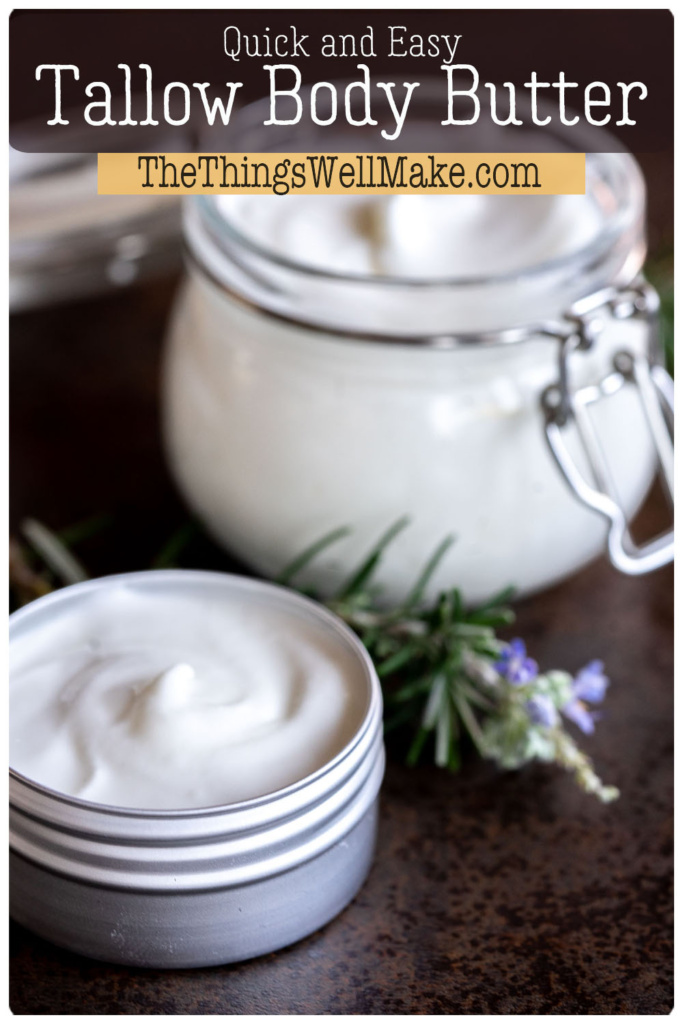
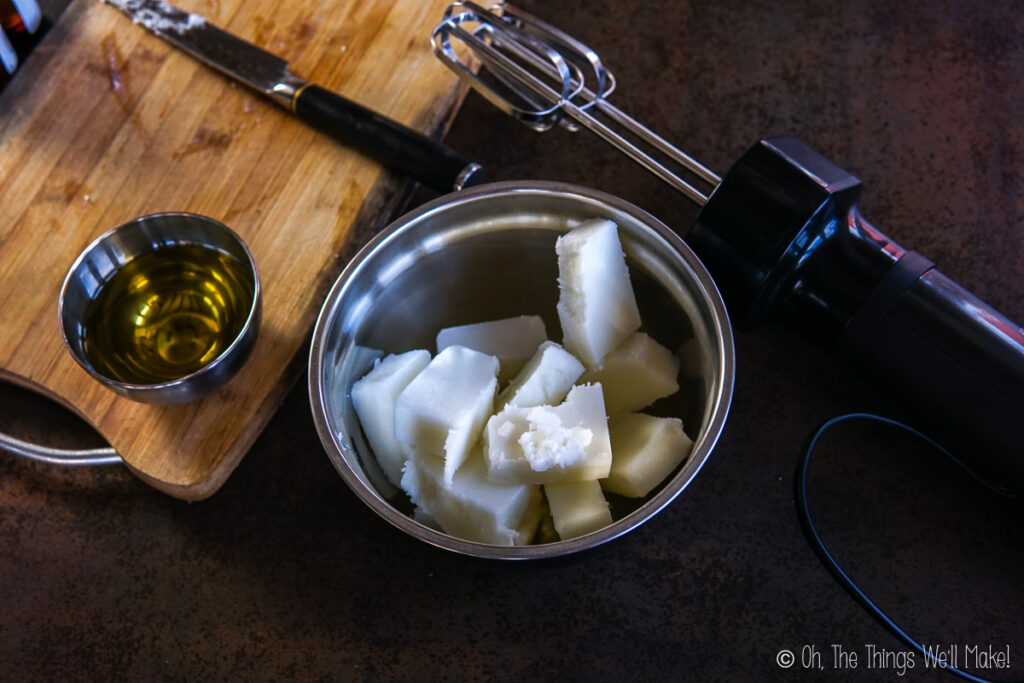
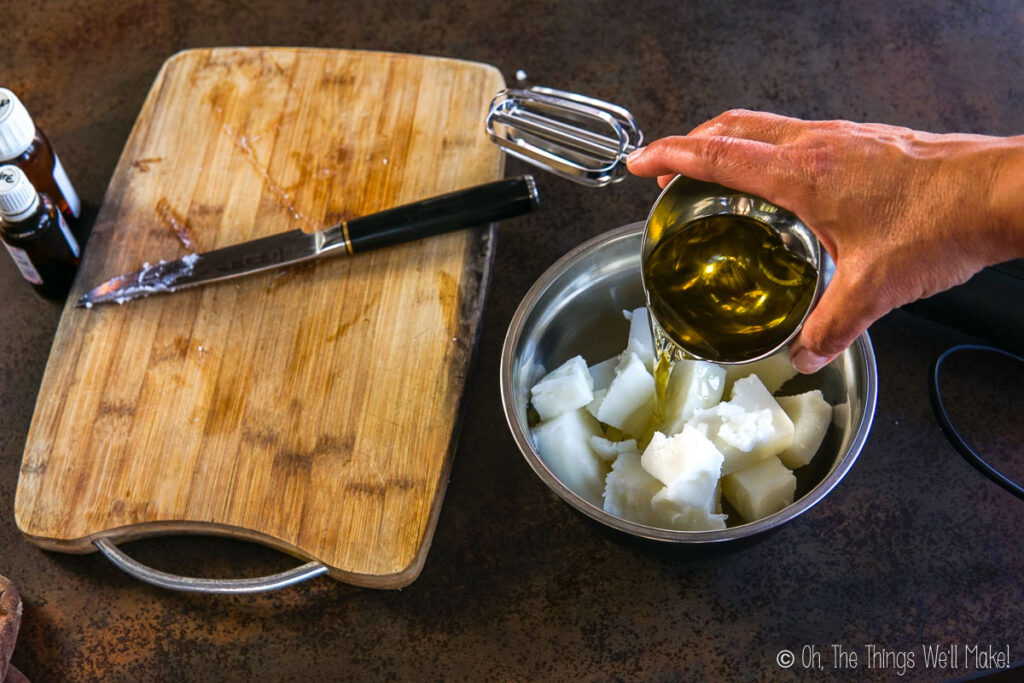
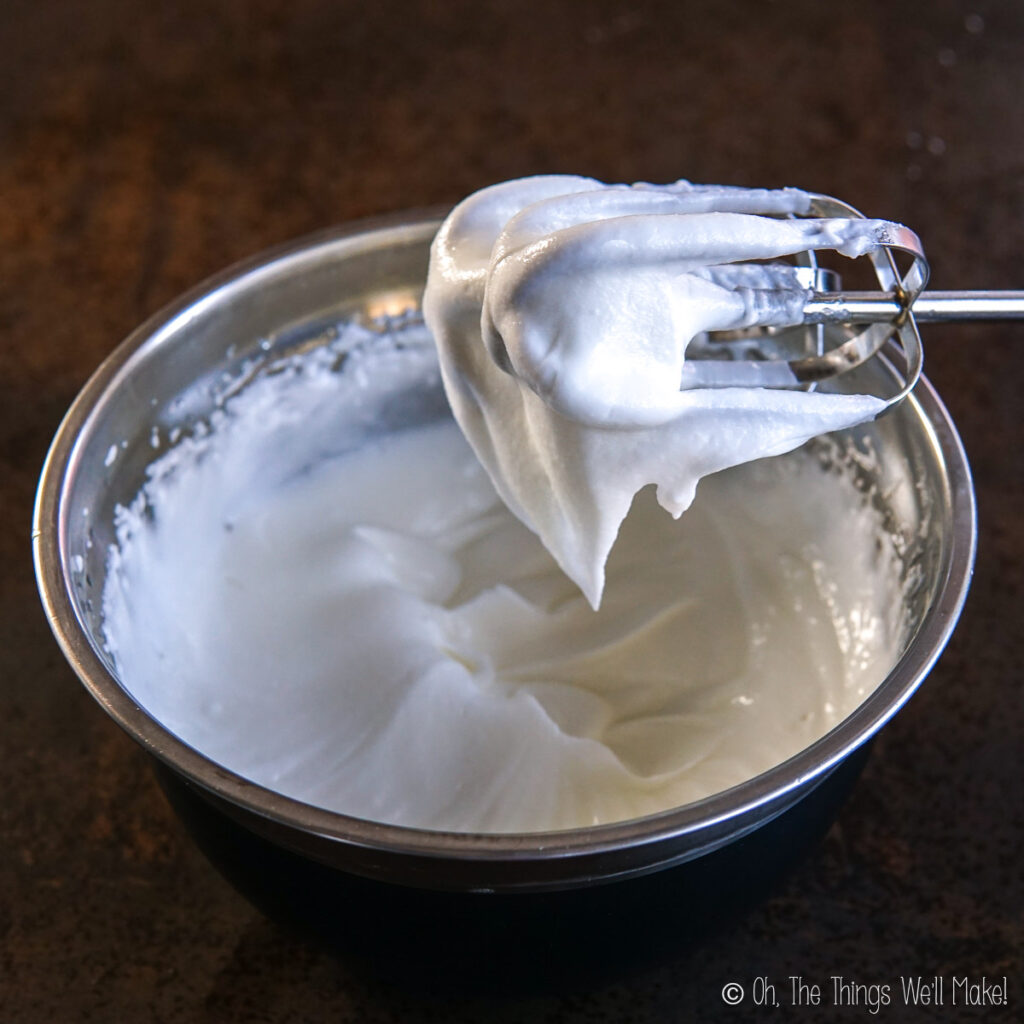
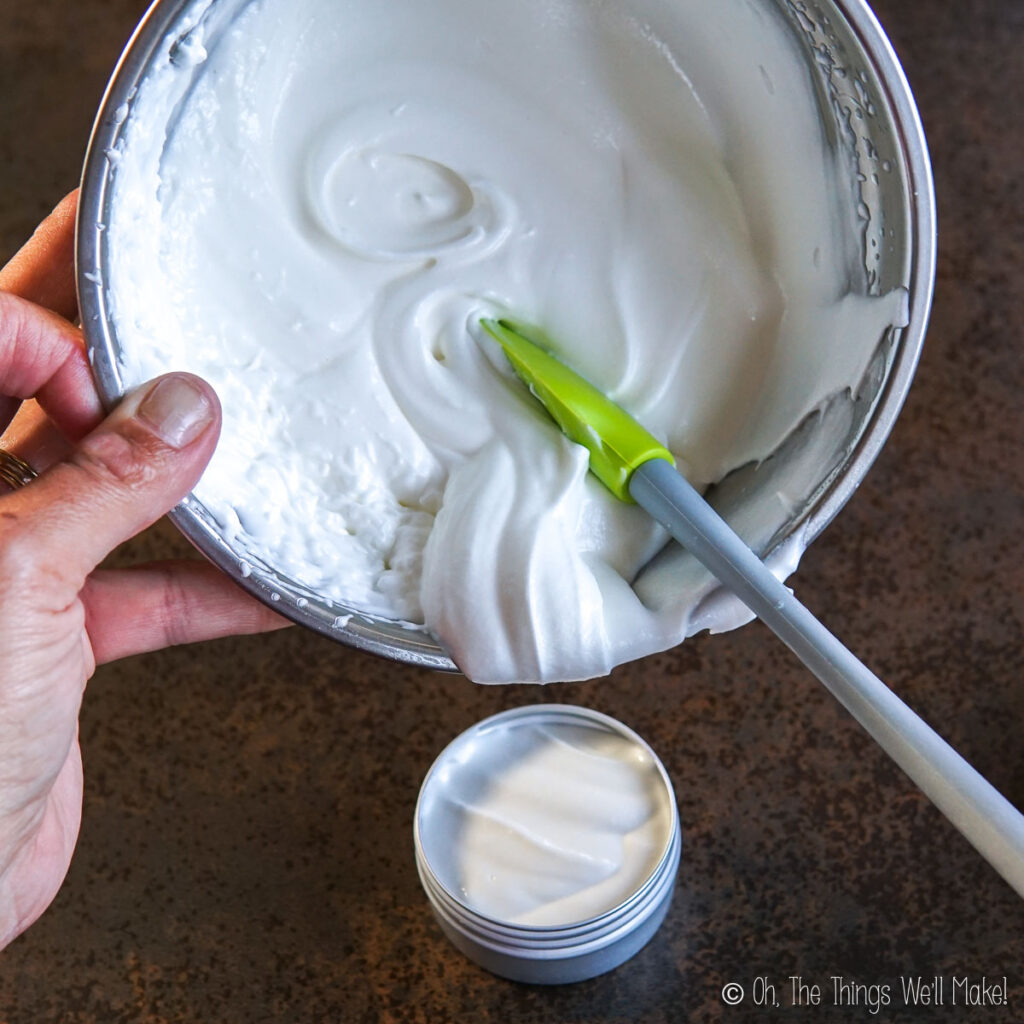
 Butter Egg Latte (Carnivore, Keto)
Butter Egg Latte (Carnivore, Keto)
Leave a Reply